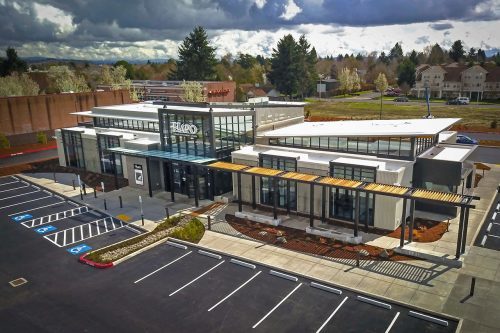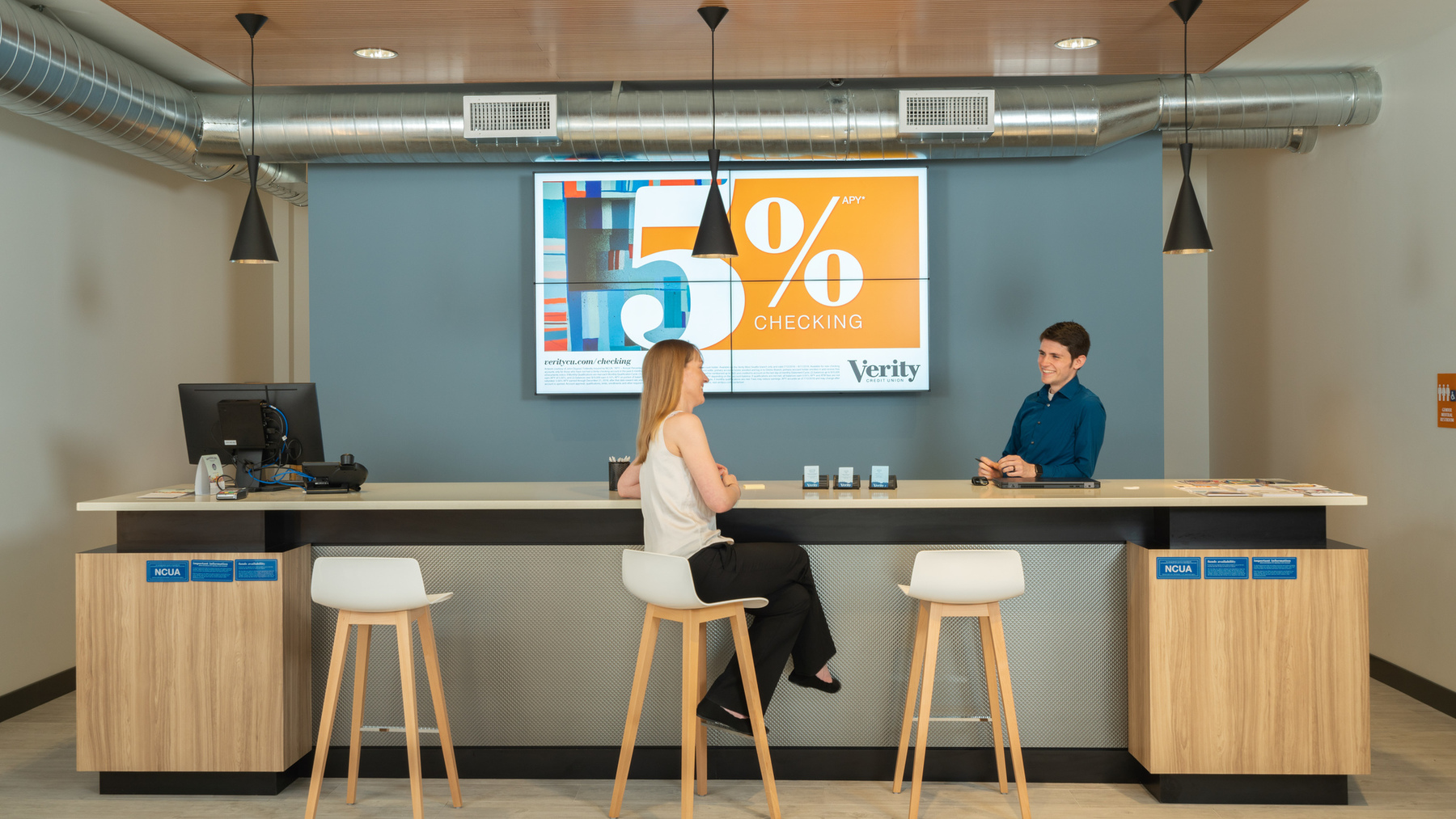The past few years have seen incredible technological innovations, but in 2019 we anticipate a shift from the pursuit of technology as a means in itself to the means to an end of creating better experiences for the people who use it. We see the pursuit of not just great digital channels and branches, but of strategies that bring everything together in a way that makes technology fade into the background to create engaging and natural experiences.
The availability of FinTech platforms and applications will allow financial institutions to focus on applying that technology to customer experiences versus developing it, freeing branch design to focus on customers over transaction support, and help better inform decision-making processes.
FinTech Will Help Close the Gap Between Big Banks and Small Financial Institutions
Software applications are expensive to develop, giving big banks a significant advantage when it comes to creating digital customer experiences. As strong digital channels grew from a differentiator into a basic requirement, it became difficult for smaller financial institutions to compete.
But FinTech is changing all of this. Third-party application development and platforms as a service are matching or even beating big banks in function and quality, and they are democratizing access to the latest and greatest technology. We see this in both in third-party apps, such as Mint or Credit Karma, which give users control over their financial lives outside of any financial institution’s ecosystem, as well as in the falling cost of developing robust, feature-rich apps for even the smallest credit union or bank.
This allows financial institutions to take a step back away from figuring out the implementation of technology and instead focus on the application of that technology, in effect shifting their focus from the technology itself to the people who will use that technology.

In 2019 you’ll see the effects of this when the small credit union down the street connects you to the same branch staff you meet in person via text or video chat in their mobile app, or when a local bank moves to an open banking API that integrates seamlessly with your favorite financial planning app. The once-high barriers to participation in digital channels will continue to drop away and the organizations committed to understanding their customers will leapfrog big banks in experiences.
Customers Will Seek Experiences Over Products and Services
Competing on price, especially with products like mortgages and other loans that customers may see as a commodity, is incredibly difficult and can lead to a race to the bottom.
But consumers today are more focused on the experience than the product or service, so much so to the point that research by Price Waterhouse Cooper found that they’ll pay 16% more for the same product with a great customer experience. This creates an opportunity for credit unions and banks to win over customers and build real loyalty with a personal touch.
So what does this mean for financial retail? In branches it can mean shifting the design objective from just performing transactions to encouraging conversations, building relationships, and delivering amazing experiences.
No matter how friendly and engaging the staff behind a teller line are, it’s difficult to escape the impersonal atmosphere that this type of branch creates.
A traditional branch is designed around a teller line, fixed workstations around which all routine transactions are based, and private offices where more complex services are offered. This layout creates barriers between staff and customers, as well as between different types of transactions.
When a customer walks into a tellerless branch, they can be engaged in conversation at the door by the same universal associate who can help them cash a check, take out a mortgage, or help them plan their financial life. Current fintech innovations make the dedicated workstation unnecessary, and laptops, tablets, and cash handling machines connected to your CRM and core banking system allow transactions to happen anywhere. So where you previously had to focus your branch design around transactions, you can now design a branch around creating a more personal environment where both visitors and staff feel comfortable and engaged.

Creating these personal experiences will take your relationship with your customers beyond a traditional bank-customer relationship.
Data Will Support Human Intuition in Decision-Making
Predictive analytics is quickly becoming commonplace in the financial industry as data analysis firms and platforms provide these tools to organizations that aren’t big enough for a dedicated business intelligence department. Where traditional data analysis strategies involved looking at statistics to guide human decisions, predictive analytics provides deeper insights into the underlying trends using complex models that can take thousands or more variables into account. This helps credit unions and banks develop strategies that better meet customers’ needs on a personal level as well as provide more robust services.
Take fraud detection as an example. Intuition might lead the fraud department to flag credit card purchases outside of a customer’s region or if the items purchased are high-value. But a rigid rule like this may frustrate frequent travelers while missing out on local fraud. Predictive analytics can go beyond this type of intuition with machine learning algorithms that look at every individual’s purchase history. So when a purchase is made in a store in France, the algorithm may predict a lower chance of fraud if a person is a frequent traveler or if the purchase is commonly bought by other people with a similar transaction history.
Predictive analytics can also guide branch strategy decisions by looking at millions of data points and predicting which sales goals best match the market’s needs or which location will best serve both current and potential customers. It can even enable you to tie physical and digital channels together in a tangible and measurable way. Human intuition is absolutely necessary to check the model and make final decisions, but the ability of these tools to draw on subtle relationships between many variables when making a prediction gives human decision makers a much stronger foundation than traditional statistics alone.

These advances in data analysis allow organizations to better understand the people they do business with and will allow them to develop more personalized strategies and services.
Putting People First
In the coming years technological innovations will transform the industry, but the biggest impact we’ll see won’t be from new technology itself. Rather, most change will come from organizations seizing opportunities presented by these innovations to shift their focus from the implementation of technology to a strategic application of technology to provide better customer experiences.
Develop a forward-thinking branch strategy that captures these opportunities with our Branch Transformation Planning Kit. It will walk you through the process of developing a branching strategy from developing your plan and objectives to aligning your team around a common goal. You'll also get a partner selection guide with an RFP template and weighted scorecard.
Sign up and download now!
[ninja_form id=29]

